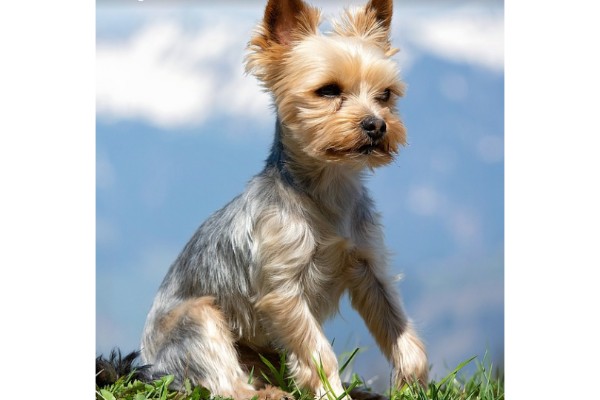Yes, Yorkies do shed. Yorkies have their own different cycle of coat growth and shedding process. Yorkies shed significantly less than the average dog as a result of this special characteristic, making them the perfect breed for homeowners who dislike having a lot of pet hair all over the place.
Table of Contents
Do Yorkies Shed?
Although Yorkies do occasionally release the hair, they do not shed seasonally, and that makes all the difference.
Many dog breeds have both a tough outer coat and a softer, insulating undercoat. The undercoat of these breeds tends to shed seasonally, providing less insulation in the summer and more in the winter. This type of coat is typically called fur.
Yorkies are different in that they have a fine, single-layer coat, which is typically referred to as hair. With the exception of the fact that Yorkies do not molt and regrow this coat seasonally, it is somewhat comparable to the undercoat on other breeds.
The puppy can grow a longer coat than most dogs because Yorkie hair won’t stop growing until it’s cut. However, Yorkies will still gradually lose hair throughout the year, a little bit at a time, just like you and I do.
Yorkies are essentially hypoallergenic due to their single layer of fine hair and low level of shedding, and those who have allergies typically react to their hair less or not at all. Seasonal shedders tend to produce more dander, which can be problematic for those with allergies.
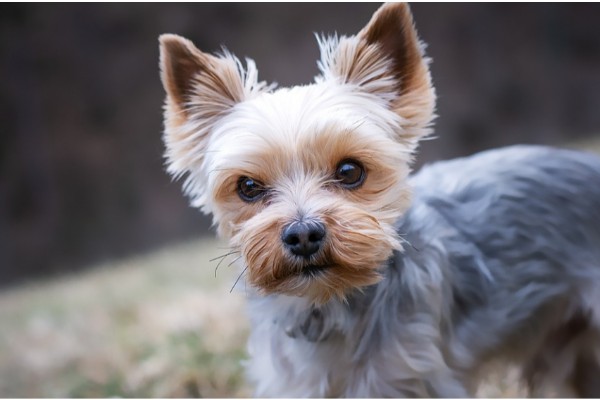
Yorkies don’t shed a lot, but that doesn’t mean their hair won’t fall out
Loose hairs frequently remain in the coat after being shed because Yorkie hair is fine and has the propensity to stick to itself. Because of this, you won’t have to deal with a lot of dog hair on your furniture during the seasonal shedding cycles, and a Yorkie will rarely leave more than one or two stray hairs on your clothing.
This does not imply that you will never see hair from your Yorkie in your house. The growth, maturation, and eventual shedding of Yorkie hair follow similar cycles to those of human hair. The amount of shedding is, nevertheless, very little and manageable, and in a house that is regularly cleaned, it will probably go almost unnoticed.
Regular Yorkie grooming will also help to eliminate the minimal amount of shedding that does happen and reduce loose hairs. Using the proper grooming tools to brush your Yorkie at least a few times per week will help keep flyaway hairs under control and maintain the beauty of their coat.
When particular circumstances could cause shedding to occur, grooming and hair care for Yorkies become especially crucial. For instance, hormone levels may be higher in pregnant dogs, which may result in more shedding. Similarly to this, if your dog is battling certain health conditions that affect a Yorkie’s coat, it may shed more than usual.
However, all of these issues are typically transient, and shedding patterns return to normal once the puppies are delivered or their health has stabilized.
Do Yorkie Puppies Shed?
It’s a common misconception that Yorkie puppies lose their coat as they grow.
This myth is most likely caused by the fact that Yorkie pups’ colors begin to change at around six months of age. Now, new hair growth appears with a color that is paler than the original puppy coat, but it doesn’t affect the normal rate of shedding, and the change happens gradually over a number of months.
This still holds true for Yorkie puppies of all sizes, including ‘teacup’ Yorkies. Yorkie shedding patterns ought to be remarkably consistent over the course of a dog’s life, provided that it’s healthy and developing normally.
How Much Do Yorkies Shed?
There is no guarantee that all Yorkies will shed little. Outliers could exist. Furthermore, some people will shed more than others. It all depends on the specific dog. The best way to gauge how much a Yorkshire Terrier will shed is by asking real owners this question.
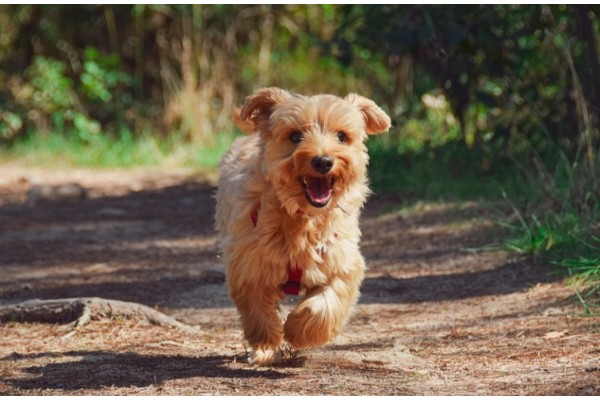
How To Prevent Yorkies Shedding
Nutrition, skin health, grooming, and exercise are the four main areas you need to focus on to stop Yorkie shedding. We’ll briefly discuss them below, but you can read more about them in our guide to Yorkie hair loss.
Diet & Nutrition
The prevention of abnormal Yorkshire Terrier shedding is largely dependent on nutrition. Healthy hair follicles and stronger hair are supported by a diet that is balanced in Omega 3 and Omega 6 fatty acids, zinc, vitamin B7, and other nutrients.
A Yorkie will have a stronger immune system and be less prone to more serious health problems that can result in hair loss with proper nutrition. A puppy that consumes a balanced diet will also typically have glossier, less brittle hair that will be less likely to shed early.
In addition to providing your Yorkie with a balanced diet, supplements like fish oil or a phytoplankton supplement have many of the necessary nutrients for promoting general health, and immune resilience, and helping to strengthen the coat.
Skin Health
The coat of your dog is particularly vulnerable to allergies and parasites. Infected, irritated skin can result from allergies and parasites if they are not treated. Infected skin and parasite-related complications frequently cause scratching, infections, and other problems that can cause significant hair loss.
The first step is to determine which allergens are specific to Yorkies. As soon as an allergy is discovered, treatment with medication or simple contact avoidance will help prevent allergic reactions and lessen the resulting skin irritation.
To stop parasites from taking a firm hold in your dog’s skin, it’s critical to determine what kind of parasites are present and seek treatment right away. Many parasites, such as ear mites and ticks, are curable with straightforward remedies that can be used at home or with the assistance of your veterinarian.
Grooming & Haircut
Regular grooming will help identify underlying conditions more quickly by removing dead hair, maintaining healthy hair’s shine, and keeping it all clean.
Routine bathing and brushing prevent major tangles in a Yorkie’s coat, which can cause bald spots and irritation in addition to keeping the coat glossy and healthy-looking. Additionally, grooming stimulates a dog’s skin and hair follicles, encouraging healthy growth and oil production. You can follow along with all the steps in our walkthrough of how to groom a Yorkie.
Regular bathing will wash out irritants like pollen and dust in addition to brushing. Natural essential oils found in high-quality Yorkie shampoos can help repel insects and parasites, and shampoos with ingredients like oatmeal and lavender can help reduce inflammation.
Haircut
The Yorkie is known for having a unique ability to develop long, silky coats that, with proper care, can frequently reach floor length. The disadvantage of Yorkie coats—especially those that are allowed to grow out—is a greater risk of tangles, trapping of irritants, and significantly more matting when grooming sessions are neglected.
The likelihood that a Yorkie coat will itch, mat, or become otherwise uncared for increases, which could eventually lead to hair loss.
Giving your Yorkie a shorter puppy cut, which requires much less upkeep, is an easy way to help prevent these kinds of problems. Puppy cuts have the added advantage of rarely tangling and generally shedding less hair due to their shorter length.
Exercise
A Yorkie’s physical and mental health benefits greatly from daily exercise, and the health of their coat is no exception.
Regular exercise helps to improve circulation, reduce obesity, and mentally stimulate a dog in addition to strengthening the immune system. The prevention of infections, pest vulnerability, and self-harm brought on by separation anxiety are all achieved by these advantages.
In addition to frequently turning to habitual chewing or scratching when mentally unoccupied, dogs who do not get enough exercise are much more likely to develop health problems that cause the skin and coat to deteriorate.
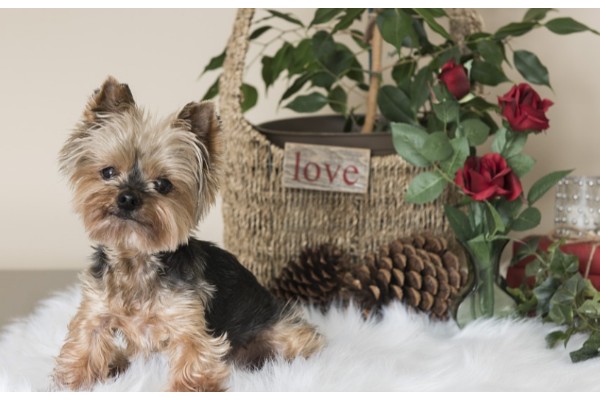
Why Yorkies Shed Less Than Others
It’s been said by many owners that Yorkies don’t shed. What you consider to be shedding really depends on you. If “losing hair” is considered shedding, then Yorkies will shed. It’s just that these small dogs shed so little that it’s quite difficult to notice.
Dogs almost universally shed, though some more than others. While Yorkies don’t shed as much as Corgis do, they are not a breed of dog that has no hair to shed. That being said, here are the reasons why these dogs “don’t shed much.”
Yorkies Have Low-shedding Hair, Not Fur
If you’ve ever petted a Yorkshire Terrier, you’ll notice that their coat feels very different from a Golden Retrievers. That’s because Yorkies have a hair coat and not a fur coat.
Maybe you don’t think it’s a big deal. But when it comes to dogs, there’s a huge difference between a hair coat and a fur coat.
While most people use the terms “hair” and “fur” interchangeably, it’s not technically correct. Sure, both are genetically similar. For example, both are made from a protein compound called keratin.
However, they are different in texture, feel, and length. Please allow me to explain. Hair is smoother, longer, and finer. Moreover, it can be straight or curly. In the Yorkshire Terrier’s case, it’s both long and curly.
On the other hand, a fur coat is almost always shorter than a hair coat. Plus, fur coats are typically more dense thanks to their “double coats” (two coat layers: the undercoat and top coat).
But do you know what the Yorkie’s coat’s best feature is? Hair coats are always going to be single coats, which means there’s less shedding due to a much slower shedding cycle.
The Yorkie’s Slow Shedding Cycle Is Slow
As mentioned above, the Yorkshire Terrier’s single coat has a slower shedding cycle. The slow cycle is also the reason why their hairs are typically much longer than their double-coated counterparts.
But no matter what type of coat the dog has, the growth cycle of hair will be the same. They just spend longer or shorter time in different phases. That being said, here are the 4 phases of a dog’s growth cycle:
1. Anagen Phase
The Anagen phase of a dog’s hair cycle is where the first phase begins. It’s the initial period when follicles become active and new hair starts to emerge.
The Yorkie’s coat in the Anagen phase will grow to its “full” length. To their genetically determined length, in other words.
Yorkshire Terriers tend to spend a much longer time in the Anagen phase compared to the double-coated dog breeds. This explains why these hypoallergenic (low-shedding) dogs have longer coats than other breeds.
2. Catagen Phase
Also called the transition phase, the Catagen phase is the point when the hair follicles of the Yorkie stop growing. It’s important to note that the Catagen phase begins before the Anagen phase does.
Their coats will briefly pause in growth and follow this up by detaching from the “dermal papillae.” For normal people, we just call this process, shedding.
3. Telogen Phase
The Telogen phase, otherwise known as the Resting phase, is a period of “limbo” for the Yorkie’s coat. Not only has the hairs paused in growth, but the shedding has stopped as well.
At the same time, some new hairs will begin growing in the Anagen phase. Once more, the hair growth cycle begins from scratch.
4. Exogen Phase
At last in the Exogen phase, the hair on your Yorkshire Terrier will start the final shedding phase. Simultaneously, new hair will already be growing and ready to take over in the new cycle.
Yorkies tend to spend less time in the Exogen shedding phase because they just don’t shed as much as other dogs. Other breeds, during their Exogen phase, can shed heavily for a full month, but the Yorkie cannot.
Small Dogs Have Less Hair
Even if your Yorkie is the exception and “sheds a lot,” it’ll likely be hard for you to even notice. They are small dogs, which explains why. In fact, they’re some of the smallest breeds in the world.
These dogs rarely grow over 9 inches tall. And for the average Yorkie, you can expect them to be around 4 to 6 pounds in weight. They’re tiny dogs!
Take the Great Dane as an illustration. Considering their enormous size, Danes typically have a moderate amount of hair shed. However, because they’re one of the largest dog breeds in the world, it feels like they shed excessively.
In contrast, because there is so few dogs to go around, a small Yorkshire terrier that sheds a lot might still seem like a low shedder.
But because Yorkies are naturally low shedders and small, it’s easy to see why some owners claim that their dog doesn’t shed at all.
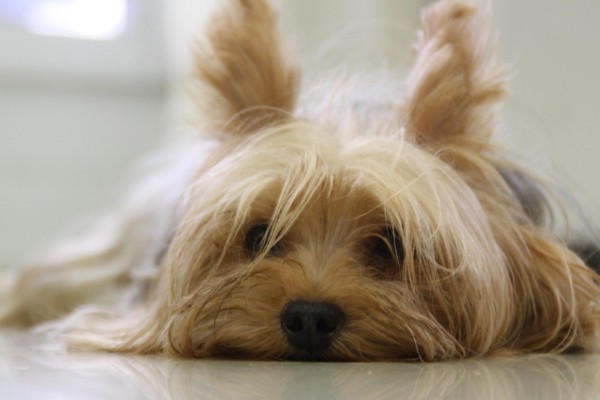
Frequently Asked Questions
Because Yorkies have such a low-shedding reputation, there are some common questions we often get about their coats. Here are some of the most frequently asked questions about the Yorkshire Terriers, their coats, and how to control their shedding.
Why Does My Yorkie Shed So Much Hair?
Yorkies do shed, as we have already discussed. But if you see excessive hair around your home, make sure there are no recent changes in diet, stress levels, or daily lifestyle routine. It’s also possible that having a new pet in the house will make them more stressed. Yorkies are renowned for having separation anxiety when they are not with their owners. So, if someone in your home has returned to work or isn’t home when they usually would be, this could cause your dog to become stressed.
How Soon Should I Visit The Vet?
Visit the vet right away if you think your Yorkie is losing hair more quickly than he should be. Although it is very likely that everything is fine, it is always better to be safe than sorry. If you notice sore skin or that he is losing hair in patches, you definitely need to schedule an appointment as this shouldn’t be happening.
My Yorkie’s Coat Has A Tangle That I Found. What Can I Do?
Even if you regularly brush your Yorkie, tangling is a common problem with his coat. Before using a brush, try to tease it out with your fingers. The tangles can also be loosened up by misting leave-in conditioner over them. Simply snip it out if you are still unable to do so. His hair will quickly regrow if he doesn’t, and leaving it in will only make it worse.
